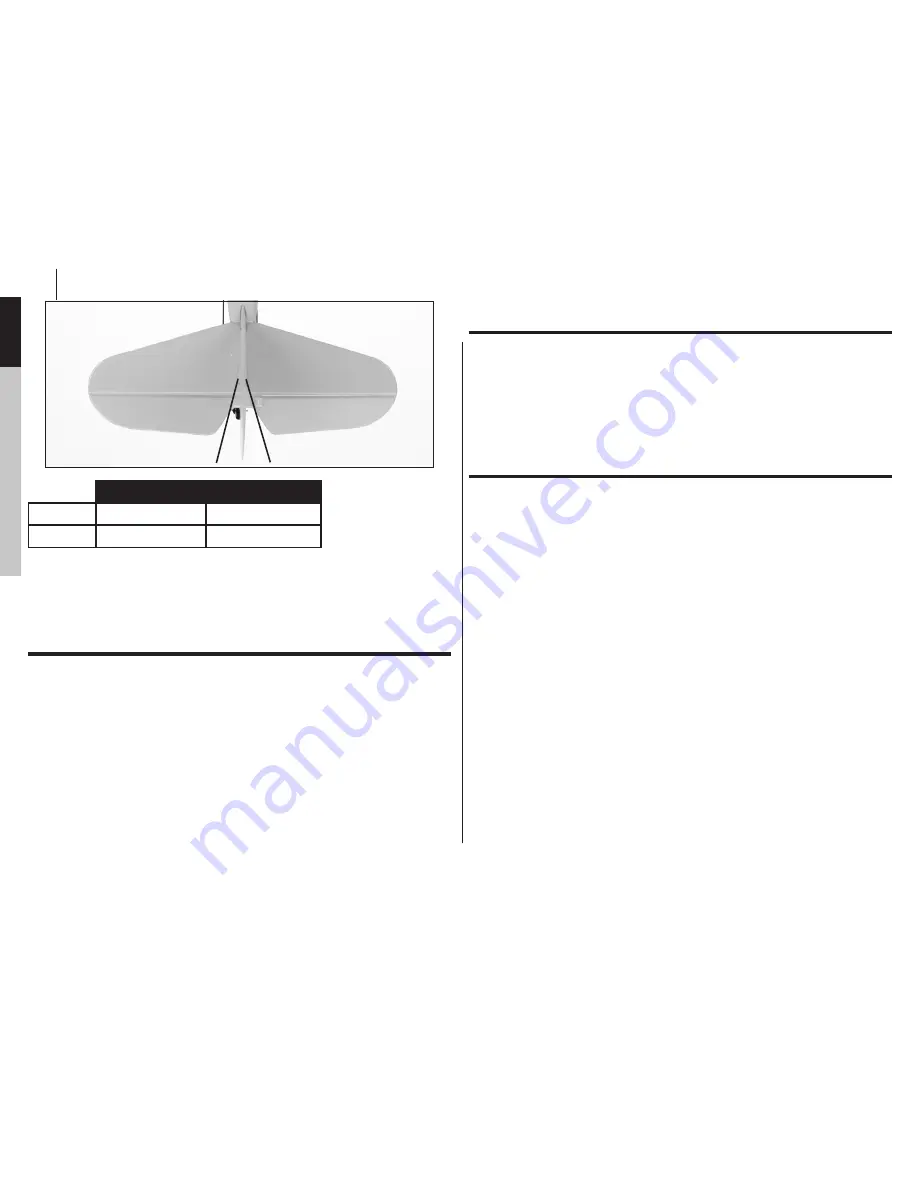
12
EN
DE
FR
IT
6mm
High Rate
Low Rate
Elevator
5mm up/down
3mm up/down
Rudder
6mm left/right
4mm left/right
With the battery installed, the center of gravity is approximately 28mm as
measured back from the leading edge of the wing. This can vary by approximately
1 to 2mm.
Flying Checklist
❏
Always turn on the transmitter first
❏
Plug the flight battery into the lead from the receiver
❏
Allow the receiver to initialize and arm properly
❏
Make sure all control surfaces are responding correctly to transmitter input
❏
Ensure propeller is secure and not damaged
❏
Fly the model
❏
Land the model
❏
Unplug the flight battery from the receiver
❏
Always turn off the transmitter last
Choosing a Flying Area
When ready for your first flight, select a relatively open area, the size of a
basketball court or larger, that is free of people and obstructions with calm wind
(if flown outdoors). Once you have properly trimmed your airplane and become
familiar with its handling and capabilities, you will be able to fly in other smaller,
less open areas. Larger open areas are preferred for first flights.
Flying the Champ
Use the low-rate settings for your first flight to become familiar with the flying
characteristics before increasing the throw of the control surfaces.
Place the Champ in position for takeoff (facing into the wind if flying outdoors).
Gradually increase the throttle to ½ to ¾ and steer with the rudder. Once the
Champ reaches flying speed it lifts off on its own. The Champ climbs with ¾ to
full throttle, and roughly ½ throttle allows the Champ to fly without climbing or
descending.
Note: If at any time you become disoriented or get in trouble, pull the
power all the way off and release the controls. The Champ will
stabilize into a steady gliding descent.
1. After launching, your Champ will climb at full throttle. Keep the throttle ¾ to
full on until reaching a safe altitude. At this same time, make sure you are
keeping the airplane steady, directed on its intended path.
2. Make necessary right and left adjustments to keep the plane on course.
After reaching 4–6 feet of altitude, you can make the directional changes
you desire.
3. Remember—the Champ is a small, lightweight aircraft. Do not allow the
plane to get too far away from you. When the plane is farther away from you
it is harder to see and could cause you to lose orientation.
4. Avoid holding the stick full right or left for more than two seconds. This will
cause the plane to enter a spiral and could threaten your Champ.
5. Do not try to climb too fast by pulling all the way back on the stick (up














































